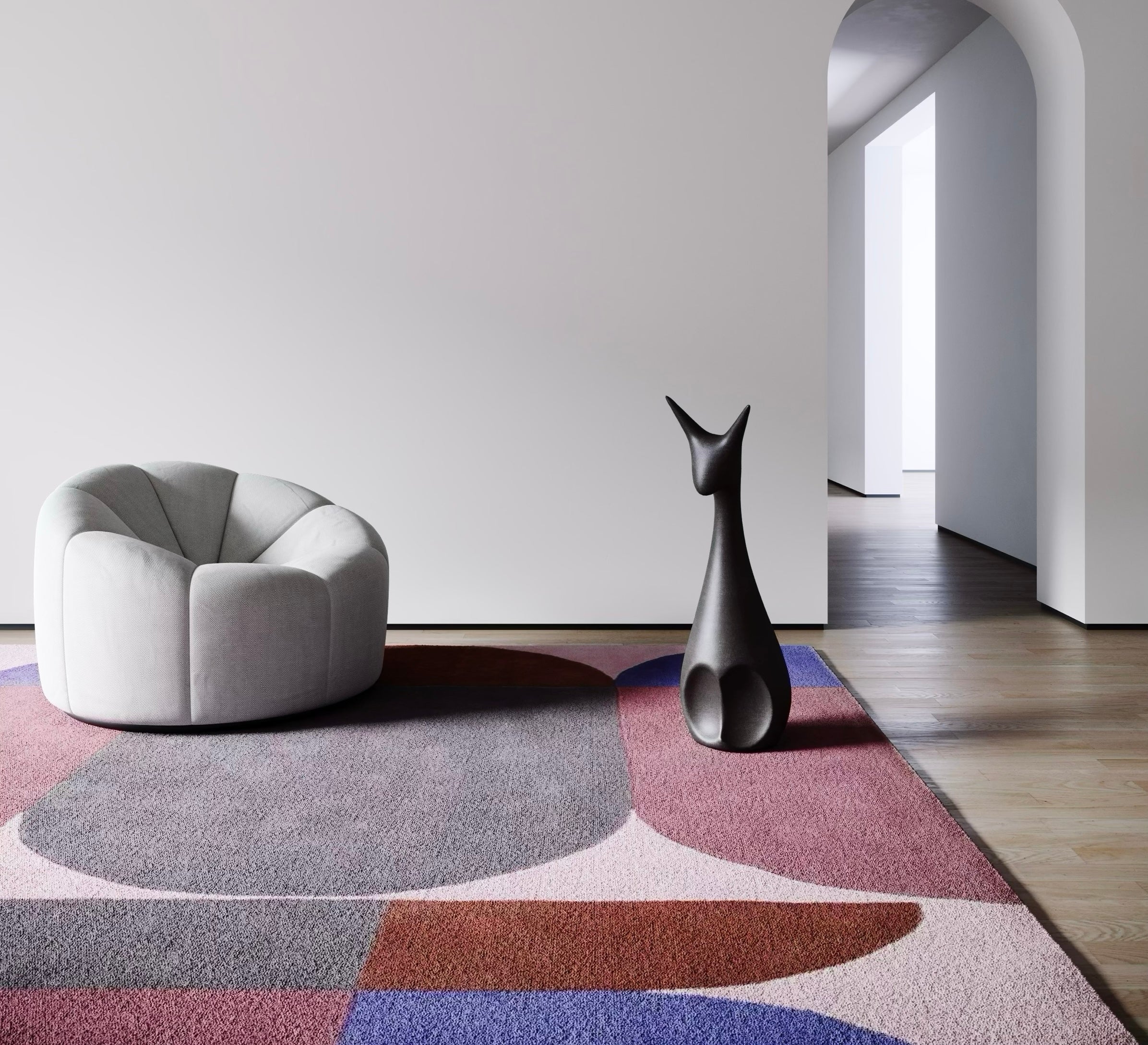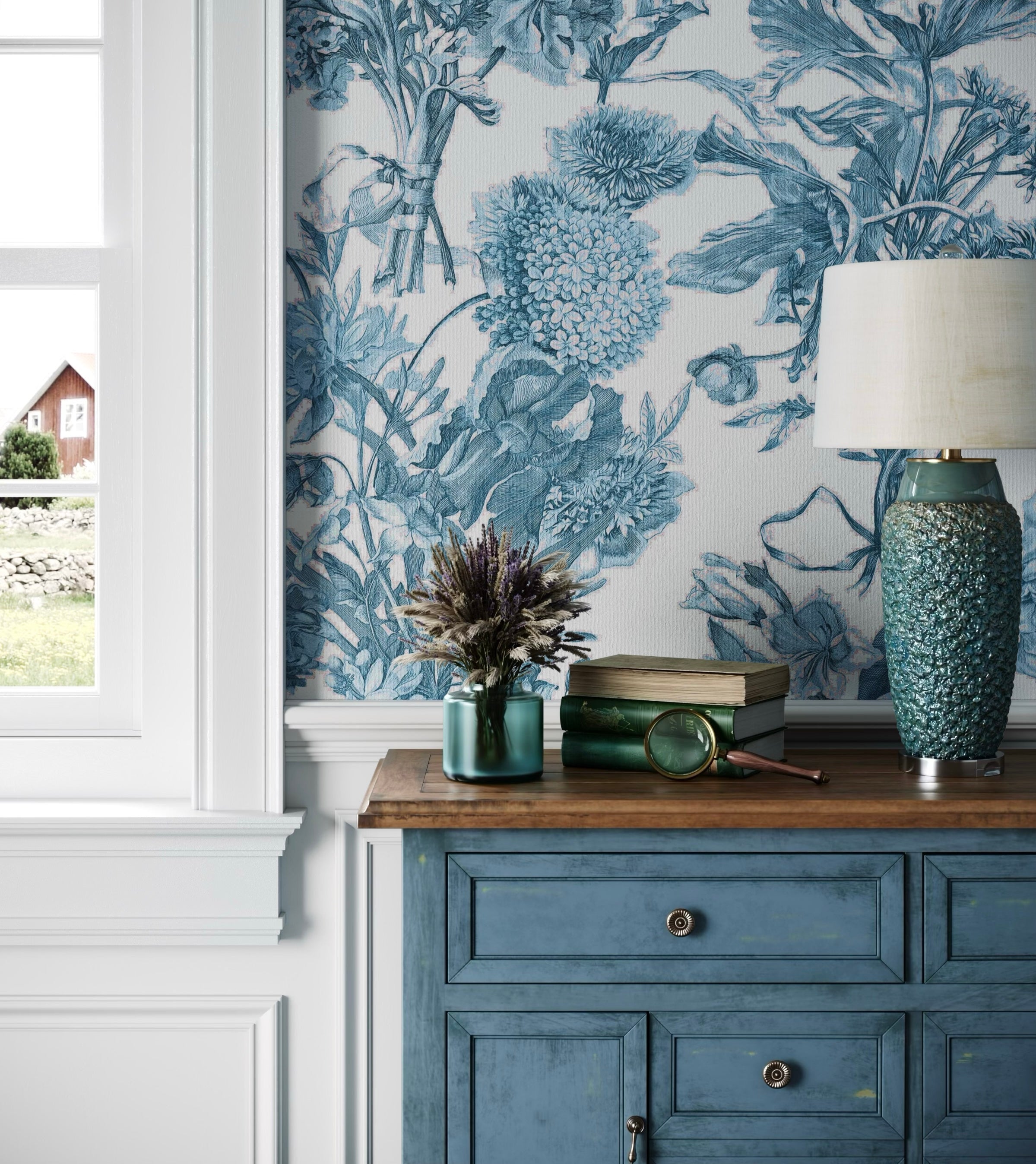Triangles collide in asymmetrical arrangement, their angles meeting without predictable rhythm. Pierre employs primary geometric forms—triangular dominance punctuated by circular interruptions—creating compositional tension through scale and colour rather than symmetry.
The pattern constructs large triangular forms in varied sizes and orientations, each shape filled with solid colour. Circles appear as accent elements, breaking triangular repetition and introducing curved counterpoint to angular dominance. Multiple colourways offer chromatic variation from saturated primaries recalling Bauhaus colour theory to softer contemporary palettes. The asymmetrical composition prevents visual predictability: no mirror lines or regular repetition, instead dynamic arrangement suggesting movement and energy. Scale reads deliberately large, individual shapes substantial enough to create bold spatial impact. The aesthetic references mid-century modernist explorations of geometric abstraction and contemporary Scandinavian design favouring graphic clarity.
Printed in Cornwall with precise colour registration maintaining the sharp boundaries essential to geometric pattern impact.
Pierre demands spatial confidence and colour commitment. The large asymmetrical composition suits expansive walls in living rooms, dining areas, creative studios where bold pattern creates deliberate focal drama. Smaller rooms risk overwhelm; consider feature walls allowing pattern breathing space. Works alongside minimal contemporary furniture—the wall provides primary visual interest rendering additional decoration unnecessary. The geometric abstraction suits modern interiors comfortable with colour and pattern assertiveness.
TECHNICAL SPECIFICATIONS:
- Width: 75cm per roll
- Length: 7 metres
- Pattern alignment: Straight match
- Repeat: Large irregular repeat
- Installation: Butt joint
CARE: Wipe clean with damp cloth; bold geometric forms and saturated colours conceal minor surface marks within their angular complexity.
BRING THIS HOME Where triangles refuse symmetry, geometry becomes composition without the comfort of predictable repetition.








